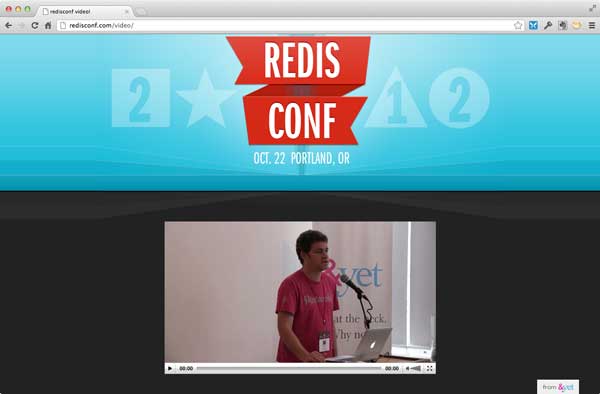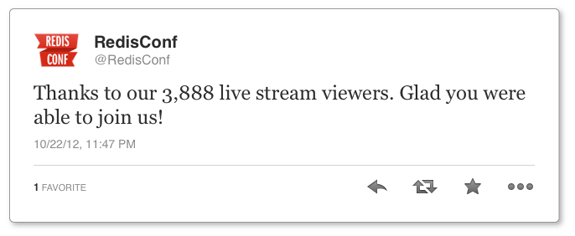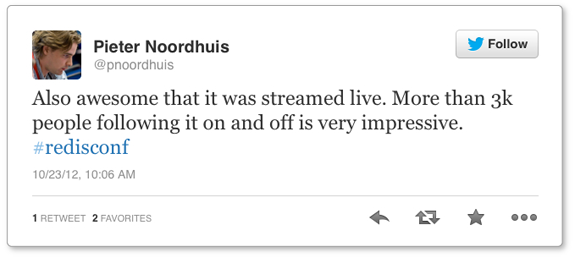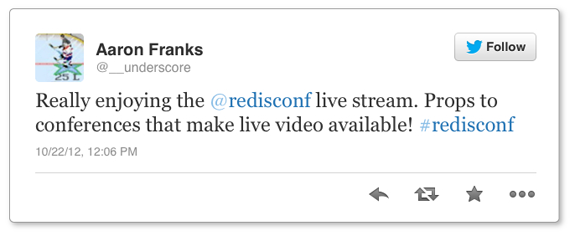On October 22, e3 Webcasting live streamed the RedisConf in Portland, Oregon. It is a one day conference born out of the larger Realtime Conference put on by web application and design company &yet, focused specifically on the niche of programmers and developers who use the open-source database known as Redis, which is a development project sponsored by VMware.
The amazing team at &yet, led by Adam Brault, created a welcoming, unique, and creative environment for their diverse community to come together. Though a smaller-scale gathering, compared to it’s big brother the Realtime Conf, the RedisConf was well organized and stimulating. People from all over the United States, as well as internationally, came to this once-a-year event. It was a chance to network, discuss ideas, get updates on the progress made by other colleagues from around the world, and learn new techniques. Where the Realtime Conf would deal with the wider spectrum of topics related to realtime application development (for laymen, think Twitter instantly updating posts in “realtime”), the Redis Conference dug into the pros and cons related to using Redis as a multi-use tool on the Internet.
The &yet team kicked off the RedisConf with a performance of Bohemian Rhapsody rewritten from a RedisConf point of view. Streaming live from The Cleaners at the Ace Hotel, over the Internet connection &yet had installed by the pro’s at Stephouse Networks, the conference was off to a great start. Speaker after speaker got up and presented to the audience of about 150-200 men and women in the room; Pieter Noordhuis, @pnoordhuis was on hand to talk about the Redis Core, and Salvatore Sanfilippo, @antirez, even spoke from his home in Italy via several pre-recorded videos.
The conference attendees listened with laptops open, absorbing the info; while we were busy making sure that the people who were watching online had the best possible video experience. As the day went on, an Amazon AWS EC2 outage started unfolding. Which, as reported by Techcrunch, affected major services such as Foursquare, Reddit, Minecraft, GitHub, Heroku, imgur, Pocket, Coursera and HipChat. Providentially, we were unaffected and the video stream went off without a problem! Overall, though there are always things that could have been improved, the RedisConf stream was a huge success. Later, we were informed by Adam Baldwin of &yet that the live stream had been watched by as many as 3,000 online viewers!
People raved about the live stream on Twitter. They were impressed by the quality of the video, and they voiced their enthusiasm online. The RedisConf live web stream was a smash hit!
Many conferences think live-streaming is too expensive to be a viable option for smaller events, or have had negative experiences with poorly executed webcasts in the past. Many remote viewers were grateful for the chance to view the conference even though they were unable to attend in person. I suspect that there are many other conferences out there that could benefit from a well-done live stream webcast.
[message type=”custom”]
RedisConf 411
If you’d like to learn more about the RedisConf or would like to attend next year’s conference you can find out more by visiting the conference website or following them on Twitter:
Website: RedisConf
Twitter: ![]() @redisconf
@redisconf
Hashtag: ![]() #redisconf
#redisconf
[/message]




